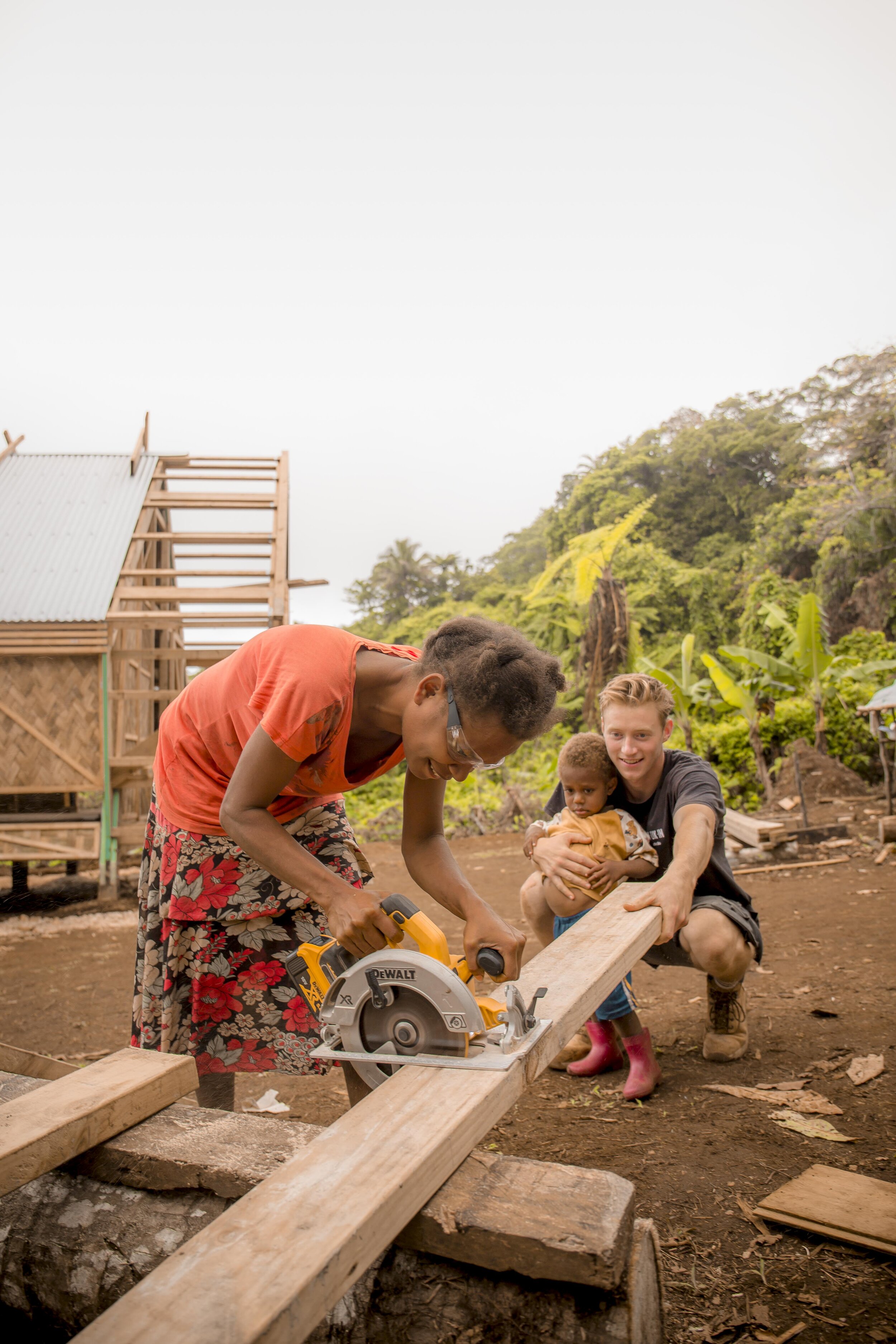pentecost , vanuatu
ranwas school
Project Build Length: 8 Weeks
Project Leaders: Harrison Marshall, David Mahon
International Participants: Aaron Chan, Greg Cockburn, Nicole Johnson, Adonai Boamah-Nyamekye, Bethany Stewart, Amanda Selormey, Alice Reynolds-Pryce, Gwyneth Chan, Jagoda Lintowska, Soni Gurung, Samuel Napleton, Danel Jansen van Rensburg, Huxley Edwards.
Project Partners: The Tanbok Project
Photographs: Katie Edwards
Our Services: Community consultation, Brief development, Full design, Construction, Project management, Educational Workshop Delivery.
Sustainable Development Targets Met:
In 2015 the worst natural disaster to hit Vanuatu, Cyclone Pam, left much of the country in devastation. Ranwas Primary School and its contents were destroyed leaving the children to be taught in unsuitable temporary shelters and with a lack of teaching supplies and materials. The Tanbok Project, an NGO established in the wake of the natural disaster, identified not only the need for new classrooms but also a library space that could withstand the harsh local climate and humidity of the surrounding area.
In the years following the cyclone, the community came together to rebuild 3 classrooms however they still needed an additional classroom, library space, and teachers office.
The project presented an extremely complex and challenging brief; the structure must be built to cyclone resistant standards whilst using materials and skills available to the local community. Then on top of this, the library room must decrease the humidity levels through passive design strategies in order to extend the life of the books stored within. Due to the location of Ranwas within the mountainous island, it is subjected to very high humidity throughout most of the year, with data readings peaking at 99%! As well as the climatic challenges, the extremely remote location meant that all materials had to endure a 24 hour boat journey followed by a 1.5 hour 4x4 truck journey along a treacherous road.
Through a rigorous design process and collaboration with engineers and environmental design specialists, the final design combines a heavy-duty timber portal frame structure with local woven bamboo cladding, shutter windows with a polycarbonate and metal roof.
The portal frame shape allows for a declining sloped facade that minimises water contact with the walls whilst also providing an internal bench, cross ventilation, high ceiling and an economical amount of timber for its strength.
Woven bamboo walls utilise the local sustainable material and local skills to create a breathable and durable cladding at zero cost - enabling future maintenance of the building to be carried out by the community independently. Large windows running either side of the classroom bring in natural daylight as well as cross ventilation, a stark contrast to the other dark and humid school building.
Currently the library books are stored in an enclosed space that uses dark metal roofing sheets to increase the air temperature and therefore reduce the relative humidity maintaining a drier atmosphere for the books. Stack ventilation allows for a continuous flow of air that draws the moisture out of the building whilst being heated by the sun on the black roofing sheets. In addition to this, an end-grain timber internal wall acts as a humidity buffer that absorbs some of the moisture in the air further lowering the humidity. The shelving design in this space, creates regular spacers between books ensuring that air can pass over a larger surface area of the books, wicking moisture away in the process.
A central ladder in the library leads up to a small mezzanine space that opens out above the veranda through a circular door, creating a small, bright and cosy reading space for children to escape to.
The project construction took place over the course of 8 weeks, with a team of 15 international participants from architecture schools and practices, working alongside over 50 local workers. Much of the detailing happened concurrently with the project construction, with all participants living within Ranwas Village and gaining experience and knowledge through cultural immersion.
We would like to say a huge thank you to all those that contributed to this project by way of donation, supply of materials or just a helping hand! A special mention to our environmental design consultants Vicki Stevenson, Eshrar Latif and Julie Gwilliam.





























